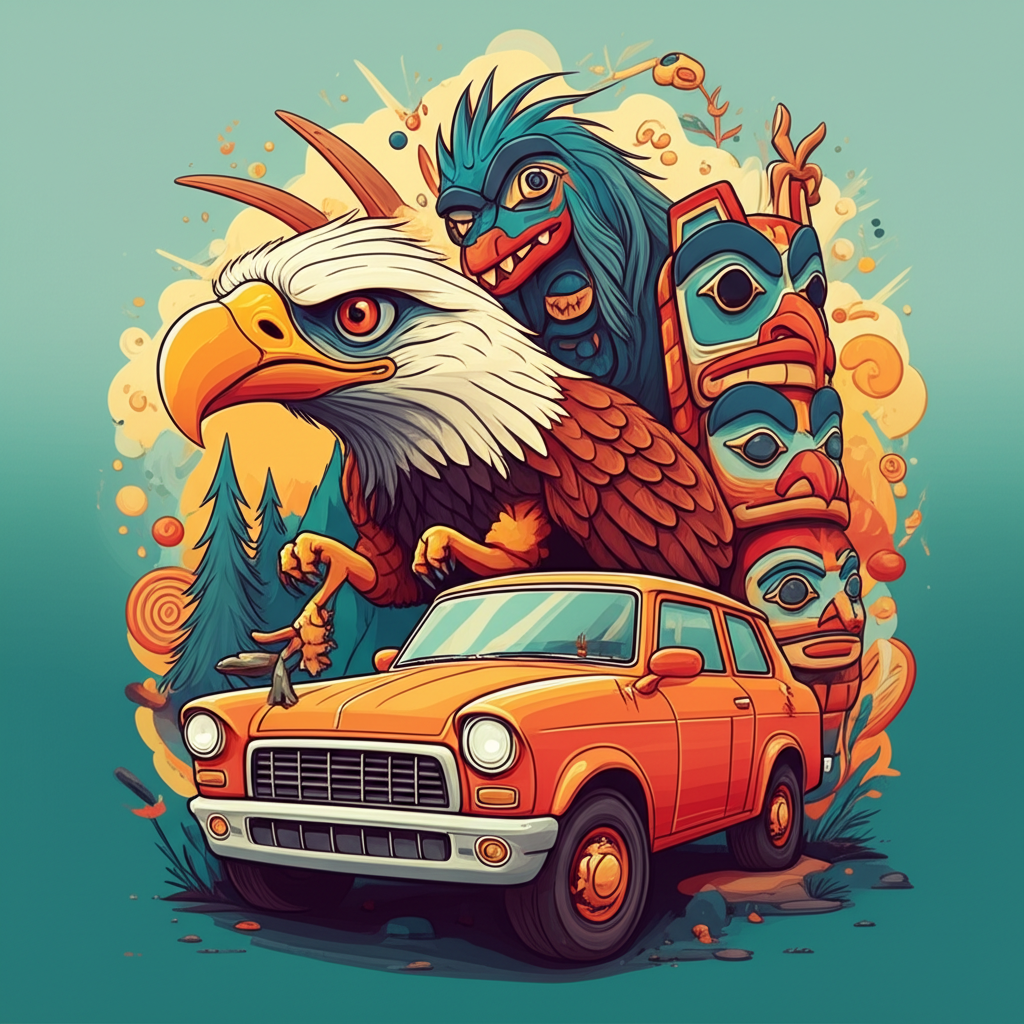
The ancient forests of the Pacific Northwest, a realm of towering cedars, mist-shrouded peaks, and the restless whisper of the sea, have long been a fertile ground for stories. These are not mere tales spun for amusement, but rather profound narratives deeply woven into the fabric of the cultures that have thrived there for millennia. Among the most potent of these are the legends of the Thunderbird and the Wendigo, figures that embody the awe-inspiring power of nature and the chilling consequences of human transgression. It is crucial to understand that these are traditional stories, shared by ancient peoples as a means of understanding their world, their fears, and their values. They are not to be believed as literal truth, nor worshipped, but rather appreciated for their rich cultural and historical significance.
The origins of these myths are inextricably linked to the environment and the worldview of the Indigenous peoples of the Pacific Northwest, particularly those whose lives were shaped by the immense forests and the bounty and danger of the wild. Imagine a time when the world was perceived as a place imbued with spirit, where every element – the wind, the water, the mountains, the creatures – possessed a vital force. For these ancient peoples, survival was a delicate dance with nature. They understood its immense power to both sustain and destroy, and their stories reflected this profound respect and caution. The harshness of long winters, the unpredictable fury of storms, and the ever-present struggle for sustenance all contributed to a worldview where the unseen forces of the world held great sway. Myths served as a framework for understanding these forces, for teaching vital lessons, and for navigating the complexities of life.
Central to these narratives is the magnificent Thunderbird. This is not a bird of flesh and blood as we understand it, but a colossal, supernatural being whose wingspan could eclipse the sun. Its eyes were said to flash with lightning, and its powerful wingbeats conjured the thunder that rolled across the vast skies. The Thunderbird was a symbol of immense power, often associated with the sky, storms, and the very forces that shaped the landscape. Its presence was both awe-inspiring and terrifying, a potent reminder of the untamed might of the natural world. It was a creature of the heavens, a powerful entity that could bring both life-giving rain and destructive tempests.
In stark contrast to the celestial power of the Thunderbird, the Wendigo represents a far more primal and terrifying force. This is a creature born of hunger, greed, and the chilling emptiness that can consume the human spirit. It is often depicted as a gaunt, emaciated humanoid, impossibly tall and skeletal, with glowing eyes and sharp, predatory claws. Its skin is said to be stretched taut over its bones, a grim testament to its perpetual starvation. The Wendigo is not merely a physical monster; it embodies the perversion of human nature, the descent into cannibalism and the ultimate loss of one’s humanity. It is a cautionary tale whispered in the long nights, a grim warning against the destructive consequences of insatiable desire and the breakdown of community.
The narrative of the Thunderbird and the Wendigo often intertwines, representing a cosmic struggle or a profound imbalance. One common thread depicts the Thunderbird as a force that can control or even vanquish the Wendigo. Imagine a scene where the sky darkens, not with the promise of rain, but with the ominous shadow of the Thunderbird. Its lightning eyes pierce the gloom, seeking out the lurking horror of the Wendigo. The thunder that erupts is not just a sound; it is the very roar of the Thunderbird’s power, a force that can shake the earth and drive back the darkness. In some tales, the Wendigo’s insatiable hunger is so great that it devours everything in its path, including other humans, leading to its own horrifying transformation. When such an act of extreme transgression occurs, the Thunderbird might be invoked as a force of justice, its thunderous wrath descending to punish the monstrous appetite and restore a semblance of order. The wind that whips through the ancient trees might be the breath of the Thunderbird, a chilling warning to those who stray from the path of respect and moderation.
The symbolism embedded within these myths is rich and multifaceted. The Thunderbird, with its dominion over the skies and storms, often represented the raw, untamed power of nature, a force to be respected and appeased. It could also symbolize divine retribution or the ultimate authority that governed the natural world. The Wendigo, on the other hand, served as a potent embodiment of fear – the fear of starvation, the fear of isolation, and perhaps most importantly, the fear of succumbing to one’s own darkest impulses. It was a stark reminder of the delicate balance required for survival in a harsh environment, a warning against the dangers of selfishness and the breakdown of social bonds. The legend of the Wendigo also served as a powerful tool for social control, discouraging acts of cannibalism and encouraging communal living and resource sharing.
In the modern era, these ancient stories continue to resonate, albeit in different forms. The Thunderbird and the Wendigo have found new life in literature, film, and popular culture. They are reimagined as terrifying antagonists in horror movies, as powerful beings in fantasy novels, and as compelling figures in video games. These modern interpretations, while often detached from their original cultural context, demonstrate the enduring power of these archetypal figures. They speak to our own anxieties about the wild, about the darkness that lurks within, and about the awe-inspiring forces that shape our world. Cultural studies scholars and Indigenous storytellers continue to explore and preserve these narratives, recognizing their invaluable contribution to understanding the history, beliefs, and artistic expression of the Pacific Northwest’s First Nations.
Ultimately, it is vital to reiterate that these are traditional stories, passed down through generations, offering insights into the worldview of ancient peoples. They are products of human imagination, cultural heritage, and a deep engagement with the natural world. As Muslims, we recognize that only Allah (God) is the true Creator and Sustainer of all existence, the ultimate source of all power and truth. These legends, therefore, are understood within the framework of human storytelling and cultural expression, not as divine revelations. They stand as testaments to the enduring human need to explain the inexplicable, to grapple with fear, and to celebrate the awe-inspiring beauty and power of the world around us. The echoes of the Thunderbird and the Wendigo, though born of ancient myth, continue to whisper through the mists of the Pacific Northwest, reminding us of the rich tapestry of human imagination and the enduring power of storytelling traditions.





